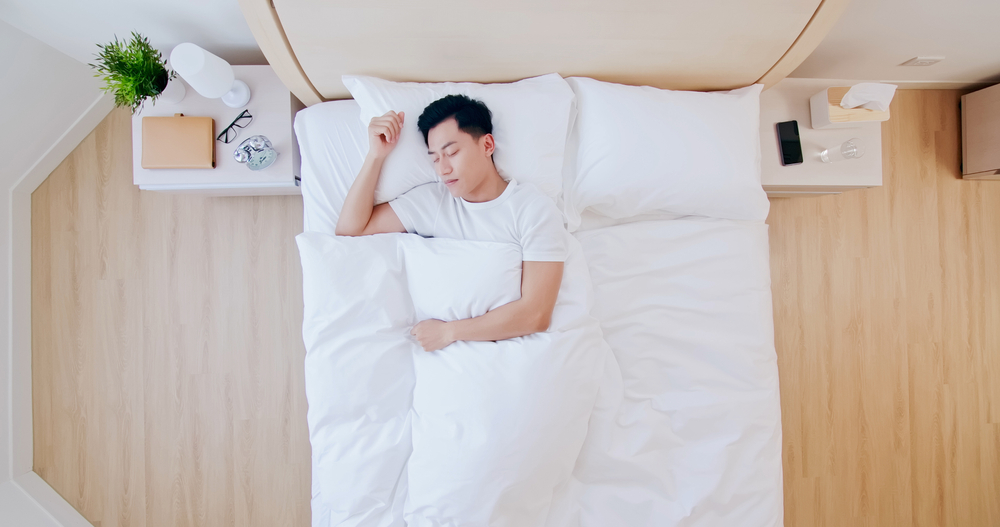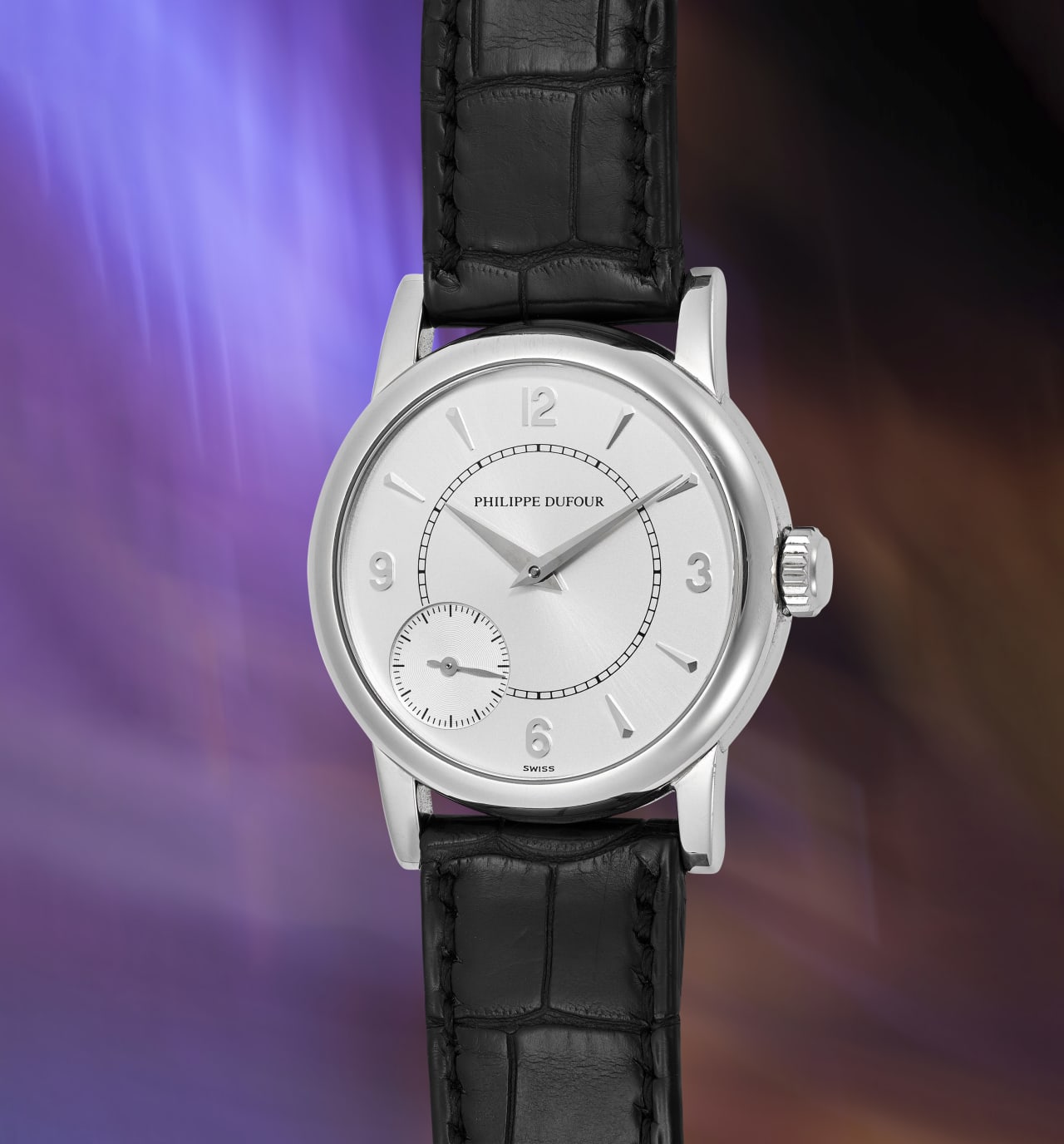To Sleep Better, Change What—and When—You Eat
The right foods and strategic scheduling can improve your shut-eye
Did your mum ever suggest a warm glass of milk to help you sleep?
Science says she may be right.
An emerging field of research called chrononutrition indicates that choosing the right foods and meal times may improve our sleep . Some key findings: Eat dinner early. Keep consistent schedules. And, yes, drink milk.
You already know that fruits, veggies and lean protein are good for your health. But they can boost your sleep, too. These foods are the basis for the Mediterranean diet, which research shows may improve sleep quality, reduce sleep disturbances and boost sleep efficiency—the amount of time you spend asleep when you are in bed.
Eating a Mediterranean or other similarly healthy diet is linked to a reduction in symptoms of insomnia , according to a just-published review of 37 studies with almost 600,000 participants. This same research also found that unhealthy diets—high in simple carbohydrates and processed foods —are associated with an increase in insomnia symptoms, says Frank Scheer, a professor at Harvard Medical School, who studies the internal body clock.
When we eat affects our internal body clock, or circadian system, which regulates our physiology and behaviour, including sleep. While our master clock resides in our brain, each of our organs has its own clock, too. We don’t want to wake up our stomach just when we’re trying to go to sleep.
“There’s a rhythm to our digestive system,” says Kelly Baron, director of the behavioural sleep medicine program at the University of Utah. “And eating at the wrong time can cause internal jet lag.”
Roughly a third of American adults don’t get the recommended seven to nine hours of sleep, according to the Centers for Disease Control and Prevention.
When Sarah Linderman, 46, started having sleep problems several years ago—tossing and turning for hours before drifting off, then popping awake for good at 3 am — a doctor suggested she focus on her diet.
The doctor recommended she consume more of her calories earlier in the day, load up on protein and veggies, cut back on cocktails at night and finish her last meal at least three hours before bedtime. Linderman soon found herself falling asleep more easily. She also began sleeping seven or eight hours uninterrupted and waking feeling refreshed in the morning.
“With the right nutrition, I took my sleep back,” says Linderman, who owns a marketing company in San Pedro, Calif.
What’s the best way to adjust your diet to improve your sleep? Here’s some advice, according to a growing body of research.
Follow a Mediterranean diet
A diet high in vegetables, fruits, whole grains, fish and unprocessed lean meat is good for nutrition and may promote sleep by reducing inflammation and providing nutrients that boost the neurotransmitter serotonin and the hormone melatonin. It also balances our gut microbiome , which may help regulate our circadian rhythm, says Uma Naidoo, a nutritional psychiatrist and director of nutritional, lifestyle and metabolic psychiatry at Boston’s Massachusetts General Hospital.
Some nutrients are particularly helpful.
Tryptophan is an amino acid necessary to produce melatonin. Our bodies can’t produce tryptophan, but foods that provide it include turkey, chickpeas, milk, grains, nuts and seeds.
Serotonin is also a precursor to melatonin. Fruits, vegetables and nuts can help boost serotonin.
Melatonin promotes sleep and influences the timing of the circadian system. Eggs, fatty fish such as salmon, mushrooms, bananas and tart cherries help promote it.
Naidoo’s perfect sleep-promoting dinner suggestion? A mushroom omelet with a side salad topped with flaxseed and walnuts.
Have an early dinner
People who eat close to bedtime have poorer sleep quality, studies show.
Researchers think this may have something to do, in part, with body temperature. Our body typically cools down before bed; this is an important part of our circadian rhythm. Digestion heats our body up, messing with this process.
“Your stomach is working up a sweat just as you’re trying to wind down,” says Marie-Pierre St-Onge, director of the Center of Excellence for Sleep and Circadian Research at Columbia University.
Eating before bed can also cause acid reflux, which often disrupts sleep.
A good rule of thumb, researchers say: Eat dinner at least two to three hours before bedtime to give yourself time to digest your meal.
Be consistent about meal times
Having a regular eating rhythm sends a strong signal to your brain about when it is time to be alert and when it is time to be drowsy, says the University of Utah’s Baron.
Try to eat your first meal and your last meal around the same time each day. “This bookends your day and helps differentiate between waking activities and nighttime,” Baron says.
Eat breakfast
When we don’t eat breakfast, we tend to get hungrier at night. And that sets us up for making poorer food choices closer to bedtime, says St-Onge.
Some studies have shown that people who skip breakfast have lower sleep quality. Researchers aren’t sure why, but they believe it’s because people who eat breakfast tend to practice other healthy habits, such as being more active.
Cut back on alcohol
Yes, alcohol may help you wind down at night and fall asleep faster. But it also messes with your sleep quality . (Do I really need to tell you this?) It suppresses REM sleep, causes sleep disturbances and shortens sleep duration, says Massachusetts General’s Naidoo.
A light evening snack is OK
Hunger is stimulating because the hormones that make you seek food are the same ones that arouse you from sleep, says Columbia’s St-Onge. It’s hard to fall asleep when you’re obsessing about the ice cream in your freezer.
If you eat a snack, make it light and have it at least an hour or so before bed. Pair protein and healthy carbohydrates—hummus and pita or fruit and yogurt—for the biggest sleep boost. Protein is satiating and carbohydrates promote sleepiness by helping the absorption of tryptophan.
And, yes, milk can help, too. A study of people recovering from a cardiovascular event showed that they slept better if they drank milk with honey before bed. And, in general, people who consume more milk throughout the day have better sleep, research shows. Milk is a good source of tryptophan, St-Onge says.
So go ahead and listen to your mum. Have that glass of milk.
 Copyright 2020, Dow Jones & Company, Inc. All Rights Reserved Worldwide. LEARN MORE
Copyright 2020, Dow Jones & Company, Inc. All Rights Reserved Worldwide. LEARN MORE
This stylish family home combines a classic palette and finishes with a flexible floorplan
Just 55 minutes from Sydney, make this your creative getaway located in the majestic Hawkesbury region.
As Paris makes its final preparations for the Olympic games, its residents are busy with their own—packing their suitcases, confirming their reservations, and getting out of town.
Worried about the hordes of crowds and overall chaos the Olympics could bring, Parisians are fleeing the city in droves and inundating resort cities around the country. Hotels and holiday rentals in some of France’s most popular vacation destinations—from the French Riviera in the south to the beaches of Normandy in the north—say they are expecting massive crowds this year in advance of the Olympics. The games will run from July 26-Aug. 1.
“It’s already a major holiday season for us, and beyond that, we have the Olympics,” says Stéphane Personeni, general manager of the Lily of the Valley hotel in Saint Tropez. “People began booking early this year.”
Personeni’s hotel typically has no issues filling its rooms each summer—by May of each year, the luxury hotel typically finds itself completely booked out for the months of July and August. But this year, the 53-room hotel began filling up for summer reservations in February.
“We told our regular guests that everything—hotels, apartments, villas—are going to be hard to find this summer,” Personeni says. His neighbours around Saint Tropez say they’re similarly booked up.
As of March, the online marketplace Gens de Confiance (“Trusted People”), saw a 50% increase in reservations from Parisians seeking vacation rentals outside the capital during the Olympics.
Already, August is a popular vacation time for the French. With a minimum of five weeks of vacation mandated by law, many decide to take the entire month off, renting out villas in beachside destinations for longer periods.
But beyond the typical August travel, the Olympics are having a real impact, says Bertille Marchal, a spokesperson for Gens de Confiance.
“We’ve seen nearly three times more reservations for the dates of the Olympics than the following two weeks,” Marchal says. “The increase is definitely linked to the Olympic Games.”

Getty Images
According to the site, the most sought-out vacation destinations are Morbihan and Loire-Atlantique, a seaside region in the northwest; le Var, a coastal area within the southeast of France along the Côte d’Azur; and the island of Corsica in the Mediterranean.
Meanwhile, the Olympics haven’t necessarily been a boon to foreign tourism in the country. Many tourists who might have otherwise come to France are avoiding it this year in favour of other European capitals. In Paris, demand for stays at high-end hotels has collapsed, with bookings down 50% in July compared to last year, according to UMIH Prestige, which represents hotels charging at least €800 ($865) a night for rooms.
Earlier this year, high-end restaurants and concierges said the Olympics might even be an opportunity to score a hard-get-seat at the city’s fine dining.
In the Occitanie region in southwest France, the overall number of reservations this summer hasn’t changed much from last year, says Vincent Gare, president of the regional tourism committee there.
“But looking further at the numbers, we do see an increase in the clientele coming from the Paris region,” Gare told Le Figaro, noting that the increase in reservations has fallen directly on the dates of the Olympic games.
Michel Barré, a retiree living in Paris’s Le Marais neighbourhood, is one of those opting for the beach rather than the opening ceremony. In January, he booked a stay in Normandy for two weeks.
“Even though it’s a major European capital, Paris is still a small city—it’s a massive effort to host all of these events,” Barré says. “The Olympics are going to be a mess.”
More than anything, he just wants some calm after an event-filled summer in Paris, which just before the Olympics experienced the drama of a snap election called by Macron.
“It’s been a hectic summer here,” he says.

AFP via Getty Images
Parisians—Barré included—feel that the city, by over-catering to its tourists, is driving out many residents.
Parts of the Seine—usually one of the most popular summertime hangout spots —have been closed off for weeks as the city installs bleachers and Olympics signage. In certain neighbourhoods, residents will need to scan a QR code with police to access their own apartments. And from the Olympics to Sept. 8, Paris is nearly doubling the price of transit tickets from €2.15 to €4 per ride.
The city’s clear willingness to capitalise on its tourists has motivated some residents to do the same. In March, the number of active Airbnb listings in Paris reached an all-time high as hosts rushed to list their apartments. Listings grew 40% from the same time last year, according to the company.
With their regular clients taking off, Parisian restaurants and merchants are complaining that business is down.
“Are there any Parisians left in Paris?” Alaine Fontaine, president of the restaurant industry association, told the radio station Franceinfo on Sunday. “For the last three weeks, there haven’t been any here.”
Still, for all the talk of those leaving, there are plenty who have decided to stick around.
Jay Swanson, an American expat and YouTuber, can’t imagine leaving during the Olympics—he secured his tickets to see ping pong and volleyball last year. He’s also less concerned about the crowds and road closures than others, having just put together a series of videos explaining how to navigate Paris during the games.
“It’s been 100 years since the Games came to Paris; when else will we get a chance to host the world like this?” Swanson says. “So many Parisians are leaving and tourism is down, so not only will it be quiet but the only people left will be here for a party.”
This stylish family home combines a classic palette and finishes with a flexible floorplan
Just 55 minutes from Sydney, make this your creative getaway located in the majestic Hawkesbury region.






















